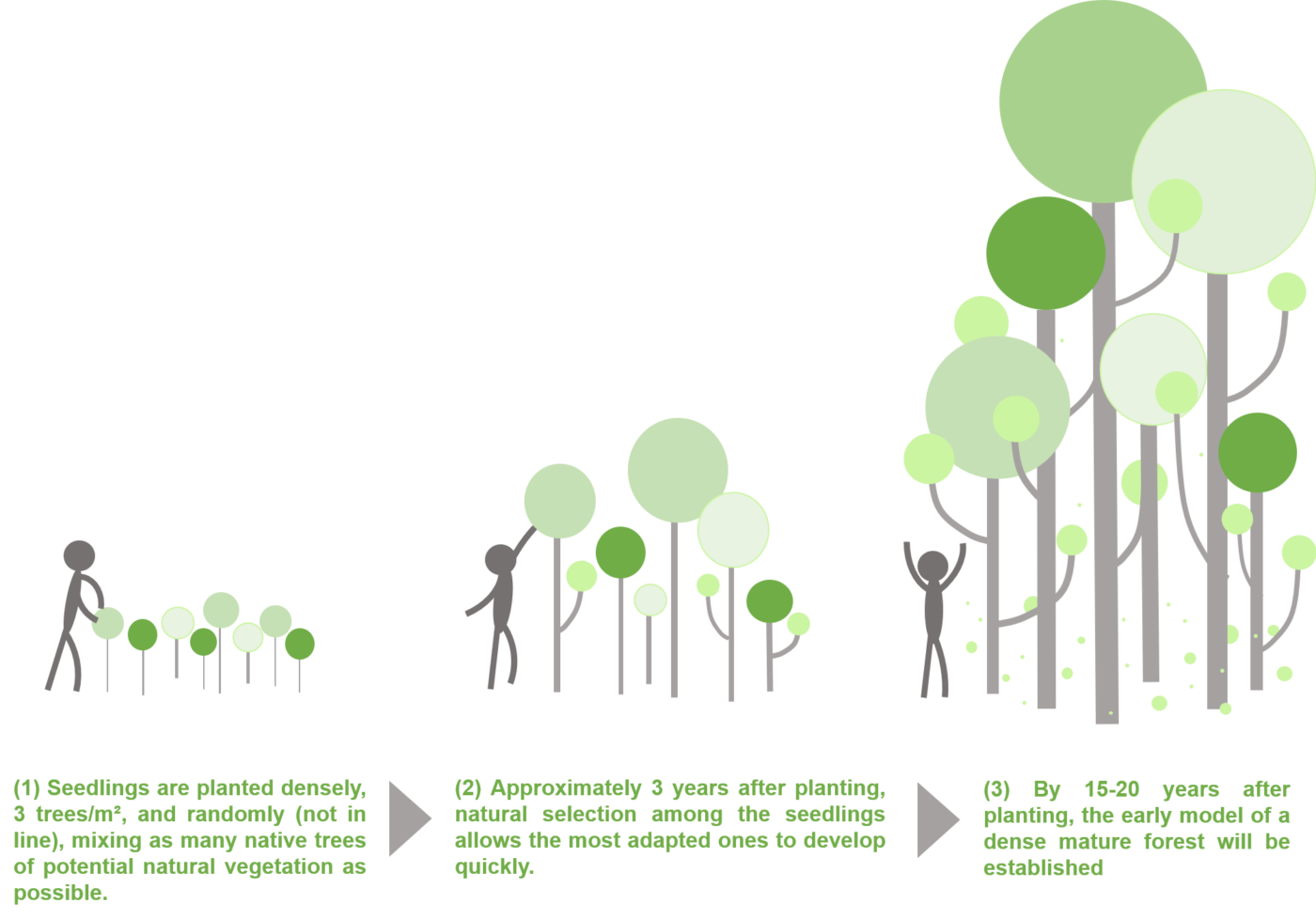Miyawaki
Miyawaki method
Urban forests
Problem with cities :
India is the fourth largest emitter of greenhouse gases that cause climate change. Rapid industrialization & urbanization of most Indian cities has left us with serious problems like poor air quality, increasing temperature, ground water depletion, constant noise pollution and loss of native biodiversity leading to ecological imbalance and therefore poor health & wellness of the population.
A solution to such major issues does exist in the form of Urban Forests!
How are urban forests helpful ?
- Air quality improvement by reducing dust and particulate matter and by regulating humidity levels
- Reduction in temperature by absorbing greenhouse gasses like carbon di-oxide
- Provides shelter & food for urban wildlife
- Trees play a major role in ground water recharge
- Improvement in soil health & quality
- Prevents soil erosion, provides stability
- Trees act as noise barriers and reduce noise pollution by damping of sound
How to grow a forest?
Forests work the best when they are grown in their natural form consisting of natural species and the best way to achieve that in a short period of time is through Miyawaki method of plantation, developed by Mr. Akira Miyawaki, a Japanese botanist who specialized in natural forest restoration.
Why Miyawaki method over conventional plating methods?
Rapid growth of vegetation because of scientific soil preparation
Straight growth of trees with noticeable height attainment within months
Dense cover of foliage with shrubs, medium height & tall trees just like natural forests
Quick canopy formation
Planting of only native species that are suitable to local soil & weather conditions
Diverse tree species breaking monoculture
Creation of bio-diversity hotspot
As the popular saying goes – The best time to plant a forest was 20 years ago, the next best time is NOW! And with Miyawaki method we get to grow forests in a fire-fighting speed.
Miyawaki method of plantation :

Important Climate facts & why we must act now
India has committed to net zero emissions by 2070 at the recent Climate Summit C0P26 held at Galsgow.
Currently, countries around the world are working towards the targets which aim to keep the global temperature rise below 2°C and limit it to 1.5°C if possible.
Average sea level is expected to rise before the end of the century which is a big thereat to costal areas and most of land may end up in water.
Deforestation is one of the major causes of carbon-di oxide emission as trees store a lot of carbon in their body as they grow. Ancient forests are referred to as ‘Carbon Sinks’ due to enormous quantity of carbon they hold.
As temperatures increase & deforestation continues, a large number of species face increased extinction risk.
India is already experiencing the consequences of 1°C temperature rise. Heatwaves, unseasonal rainfall, severe flooding, storms and rising sea levels are damaging lives, livelihoods and assets across the country. Studies have shown that India may lose anywhere around 3 to 10 per cent of its GDP annually in the future if global warming continues at this rate.
